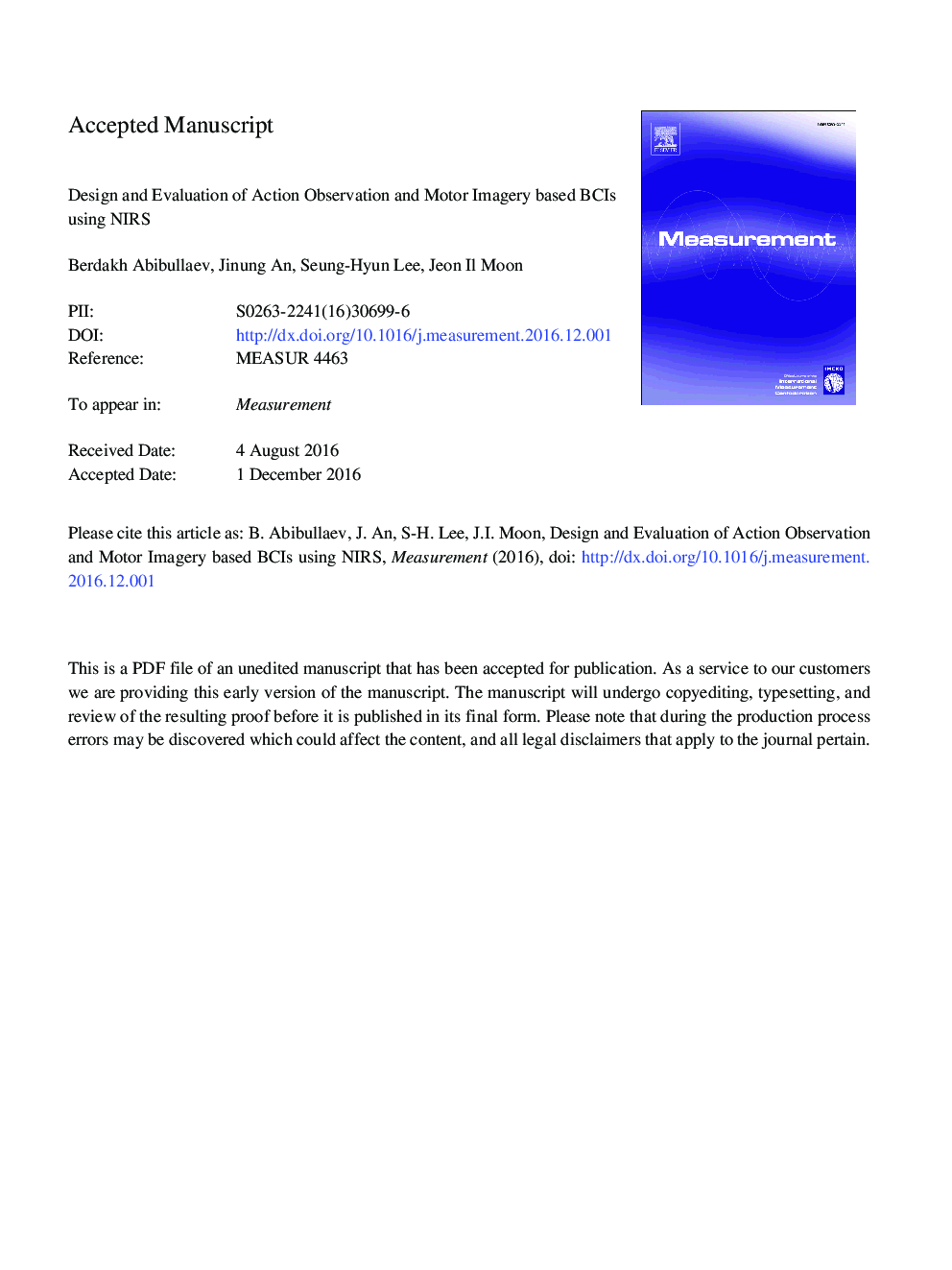| Article ID | Journal | Published Year | Pages | File Type |
|---|---|---|---|---|
| 5006868 | Measurement | 2017 | 28 Pages |
Abstract
The integration of Brain-Computer-Interfaces (BCI) into rehabilitation research is a promising approach that may substantially impact the rehabilitation success. Yet, there is still significant challenges that needs to be addressed before the BCI technology can be fully used effectively in a clinical setting as a neural prosthesis for motor impaired users. As it is still unknown whether the conventional BCI induction strategies that use different the types of stimuli and/or mental tasks induce cortical reorganization for disabled users. This paper presents a design and evaluation of a real-time Near-Infrared Spectroscopy (NIRS) based BCI protocol to control an external haptic device, and an interesting source of brain signals that may convey complementary information for inducing neuroplasticity. The protocol is based on the ideas derived from Mirror-based Therapy (MT) in which subjects not only perform literal motor imagery tasks but also combine their intents with visual action observation of a related motor imagery task. The NIRS-BCI system then commands a haptic device in real-time to move in opposing directions of leftward and rightward movement. We also compare the proposed protocol to the conventional limb motor imagery task and verify its efficacy with online decoding accuracies up to 94.99%. The initial validation of the experimental setup was done with seven healthy subjects. Nonetheless we contend that the design of the current NIRS-BCI method hold promise with patient populations for effective stroke rehabilitation therapy, because the beneficial effects of MT alone in post-stroke recovery has already been manifested in the literature.
Related Topics
Physical Sciences and Engineering
Engineering
Control and Systems Engineering
Authors
Berdakh Abibullaev, Jinung An, Seung Hyun Lee, Jeon Il Moon,
